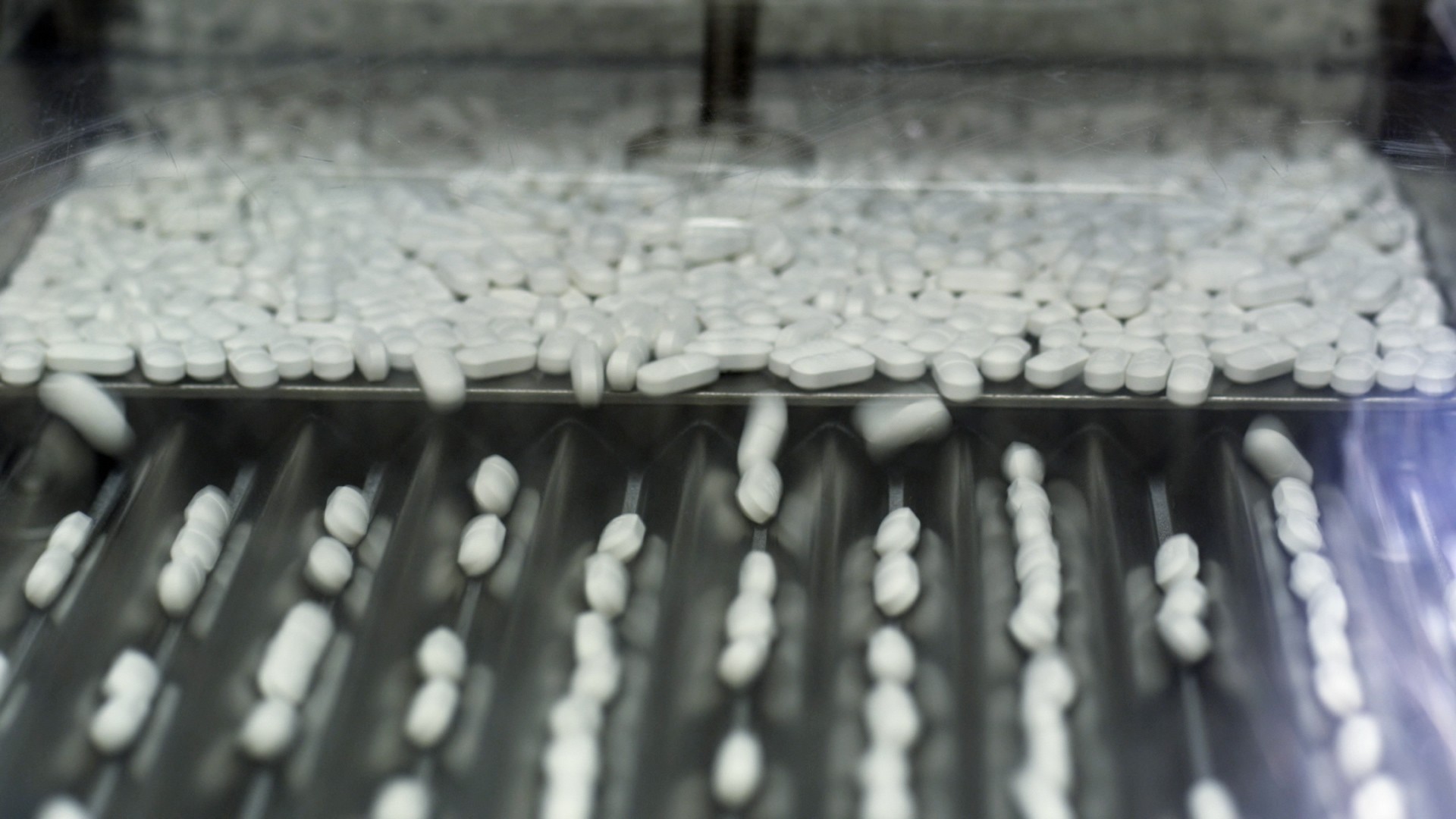Bloomberg/Getty Images
High Wire is Maia Szalavitz's reported opinion column on drugs and drug policy.In the first settlement of more than 1,600 lawsuits against it, Purdue Pharma LP has agreed to pay $270 million to the state of Oklahoma to compensate for damage done by the opioid overdose and addiction crisis, which the state alleges was spurred by Purdue's promotion of its drug, Oxycontin. (This out-of-court settlement resolves the state's claims against Purdue and means the company will avoid a televised trial.) The state is still pursuing its case against Johnson & Johnson, Teva Pharmaceutical Industries Inc., and others.But what is the best way to spend this money—and does the plan for spending this settlement set a good example for what could potentially be the largest-ever flow of money into addiction care?According to the settlement announcement, just over $100 million of the $270 million sum will be used to fund a center for addiction research and treatment at Oklahoma State University—while $66 million will be used to pay for the state’s legal costs.Of the remaining money, $20 million worth of addiction treatment medications will be provided to the center and $12.5 million will go to cities and counties for other costs related to the crisis. The Sackler family that founded and ran the company during much of the crisis, but was not named as a defendant in the suit, will pay out an additional $75 million of their own money to the center.While I am absolutely a strong supporter of addiction research, I do not think this is the best place to spend the majority of this—or future—settlement money.Currently, we have not one but two branches of the National Institutes of Health that fund addiction research: the National Institute on Drug Abuse and the National Institute on Alcoholism and Alcohol Abuse, which collectively spend more than $1.6 billion annually. Spending on the study of illegal drugs (including opioids) is more than twice that of alcohol, even though alcohol kills far more people. (For comparison purposes, the federal government spends just $1.5 billion on Alzheimer’s research, which causes more widespread disability and currently has no treatments).Critically, the real problem in the addictions field is getting research into practice, and the most important area where we lag behind is medication. We have two drugs, methadone and buprenorphine, that are proven to cut the death rate by 50 percent or more if used long term. However, the vast majority—64 percent—of addiction programs offer no medication at all to treat opioid addiction. And many of those that do only use it short term because they are ideologically opposed to long-term use.This needs to change. No settlement money should go to any program that opposes long-term use of medication for those who want to pursue that form of recovery. All programs treating opioid addiction should be required to provide these mortality figures and other data on the effectiveness of long-term medication treatment as part of the informed consent process for patients making treatment choices.
Watch More from Tonic:
And settlement money would be well spent on helping to cut the absurd red tape that further restricts availability of these life-saving drugs. Since we apparently still have a national emergency and states can use emergency declarations to void laws and regulations that stand in the way of saving lives, we should use it to declare that restrictions on providing methadone or buprenorphine to those who need it are suspended. If a doctor wants to prescribe buprenorphine, she should not be forced to be under extra scrutiny by the DEA (currently, the necessary “X Waiver” requires DEA inspection) and if addiction programs that currently do not use methadone want to provide it, they should be able to do so—particularly jails and prisons.Spend settlement money to make this happen—and also use it to improve existing programs to reduce barriers to care such as onerous daily attendance requirements, required counseling, and too-frequent urine tests. Research shows that the medications themselves are what make the difference: While counseling and other services can help, requiring people to attend only deters the highest-risk people from getting meds that could keep them alive. Instead, provide evidence-based counseling and other forms of support like psychiatric and trauma care to people who want them. This money can be spent most effectively by triaging care to people who want it rather than those who we think need it.Once people have access to medication, we also need to transform the fundamental structure of addiction treatment itself. Right now, the vast majority of all insurance- and government-funded addiction treatment programs are based on the 12 steps of Alcoholics Anonymous: many hours in treatment are spent learning about the steps, with the goal of having patients ultimately become lifelong members of a 12-step program focused on their primary issue.Social support is an important part of recovery—and attendance at 12-step and other groups can help many people and should be encouraged for those who find it useful. But paid treatment time shouldn’t be spent on a resource that’s readily available for free in nearly every community when other equally effective approaches, like cognitive therapies, can’t be accessed for free. And since some groups like Narcotics Anonymous explicitly reject the use of medication, people need this information and alternatives.The only way to transform this system is to better train the addiction workforce. This could be incentivized by offering better-trained workers better pay—currently, the pay for most is abysmal, which produces high turnover and often, bad results. This would be another good use of these funds. Like everything else here, of course, this is tricky because at the moment, there are no national standards for addiction counselor training—in some states, not even a high school degree is required. Some groups are working to create national treatment standards and these efforts should be supported, validated, and refined appropriately. All counselors must be trained to support multiple pathways to recovery.Our current addiction treatment system is broken. Fraud is commonplace. We spend too much money monitoring people with expensive and often excessive urine testing—and too little on critical services like psychiatric care and trauma-related therapies. Lots of money is spent on approaches that aren’t proven to work—and little is spent on what we know really helps. It is crucial that we don’t simply pour millions into this distressed system without accountability for results. Funds need to be allocated specifically to ensure that monies spent aren’t simply wasted.Money also needs to go to harm-reduction programs that distribute the overdose antidote naloxone and clean needles in order to help those who aren’t ready to quit or have relapsed. Right now, many lives could be saved by greater availability of naloxone, safe consumption sites, and easier access to medications. Harm reduction is the best way to rapidly reduce the death toll—so it should not be left out of the settlement monies.Finally, we cannot continue to leave people with chronic pain out of the equation. They have suffered terribly during this crisis: First, in some cases, by being prescribed medication that didn’t help them and later, for others, by being cut off arbitrarily from medication that does work. Some of the settlement money needs to go toward supporting doctors (legislatively and otherwise) with legacy patients who are benefiting from opioids—and some needs to go to humane, voluntary, and appropriate dose adjustment for those who aren’t having positive effects from the drugs. Any settlement that ignores the plight of pain patients is replicating the injustice of the crisis all over again.There are many ways that the money from this and any future settlements could be used effectively—and many ways that it could simply be used to sustain a completely dysfunctional treatment system. I hope the groups fighting to get this money will work just as hard to ensure it is well spent.Sign up for our newsletter to get the best of Tonic delivered to your inbox.
Advertisement
Advertisement
Watch More from Tonic:

And settlement money would be well spent on helping to cut the absurd red tape that further restricts availability of these life-saving drugs. Since we apparently still have a national emergency and states can use emergency declarations to void laws and regulations that stand in the way of saving lives, we should use it to declare that restrictions on providing methadone or buprenorphine to those who need it are suspended. If a doctor wants to prescribe buprenorphine, she should not be forced to be under extra scrutiny by the DEA (currently, the necessary “X Waiver” requires DEA inspection) and if addiction programs that currently do not use methadone want to provide it, they should be able to do so—particularly jails and prisons.
Advertisement
Advertisement
